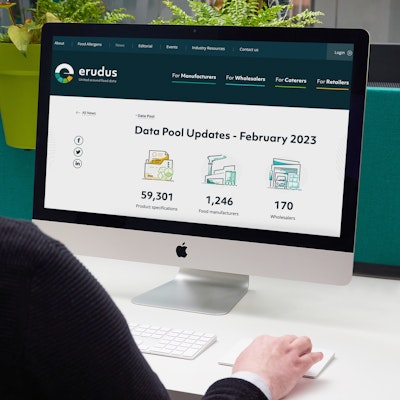Your Hazard Analysis and Critical Control Point (HACCP) Refresher

In foodservice businesses are constantly at risk of food hazards.
It’s crucial that any potential hazards and the stage at which they may occur are highlighted and dealt with accordingly, to ensure they can be removed or reduced to safe levels.
That’s why we’ve put together this refresher on HACCP…
What is HACCP?
Hazard Analysis and Critical Control Point, commonly abbreviated and referred to as “HACCP” is a management system intended to ensure food safety through the review and control of hazards.
What is a Food Hazard?
A food hazard is something that could cause a food product to be unsafe or unfit to eat.
Food hazards come in 3 different categories:
- Microbiological - involving harmful bacteria
- Chemical - involving chemical contamination
- Physical - involving objects getting into food
To be certain that any potential hazards in food production are controlled as much as possible, any food safety management procedures in place should be based on the HACCP principles.
What are the principles of HACCP?
There are 7 key principles of a HACCP food safety system. These are:
1 - Identify potential hazards, conduct a hazard analysis and specify control measures
- Identify and list any potential hazards - it’s important to consider all hazards that can be reasonably expected to occur at a process step.
- Conduct a hazard analysis - collect and evaluate any significant hazards highlighted and the conditions that lead to them occurring, such as a change in temperature.
- These hazards should then be addressed as part of the HACCP plan.
- However, whilst many hazards are important to highlight and should be controlled, only hazards regarded as significant should be progressed to the next stage of the HACCP plan.
- Specify control measures - these should be any specific actions that can be taken to eliminate or reduce food safety hazards.
2 - Determine the Critical Control Points (CCPs)
Out of the hazards identified, Critical Control Points (CCPs) can now be selected at certain stages in production. The use of CCPs is essential to prevent or eliminate a food safety hazard, or at least reduce it to an acceptable level.
To assess the correct CCPs for your business a decision tree can be used. This is a tool to help support and confirm whether a hazard needs more food safety controls. Though a decision tree is not mandatory for HACCP, they can be useful to help determine whether the step is indeed a CCP. You can find out more about decision trees here.
3 - Establish critical limits
Establishing the critical limits for the CCPs involves finding the maximum or minimum value that will control, prevent or eliminate the hazard to an acceptable level.
To do this, a criteria needs to be determined. This criteria will be used to measure when a product moves from being safe to unsafe.
For example, measuring:
- pH values
- Salt content
- Sugar content
- Temperatures
4 - Monitor the CCPs
Monitoring the CCPs requires having a planned sequence of observations of the control measures identified.
This step ensures that any CCPs or critical limits that are not under control can be highlighted.

5 - Establish corrective actions if a CCP is out of control
Step 5 is establishing the actions that need to be taken when the results of step 4 (monitoring the CCPs) show something is not under control. The aim of conducting corrective actions is to ensure the product is safe and to prevent recurrence of the same issue.
6 - Establish verification procedures
Taking time to validate, verify and review the procedures in place will serve as a prompt to make sure that the HACCP plan and actions surrounding this are capable of producing a safe product.
Having a review or examination of the HACCP plan at scheduled periods is crucial to highlight any changes required.
7 - Keep accurate documentation and records
All documentation and records used to develop, implement and review the HACCP plan must be kept and maintained.
This includes documents and records such as:
- The HACCP plan
- List of hazards and details of the hazard analysis
- CCP determination
- Training undertaken
- Daily records (glass and brittle plastic check)
- Visual inspection reports
- Team meeting records
Documentation is also important if a due diligence defence is required, so it is essential that any information, documentation or resources are kept up-to-date.
Once the 7 HACCP principles have been conducted, the finished HACCP plan can be downloaded and printed. This will then contribute to the food safety management system.






